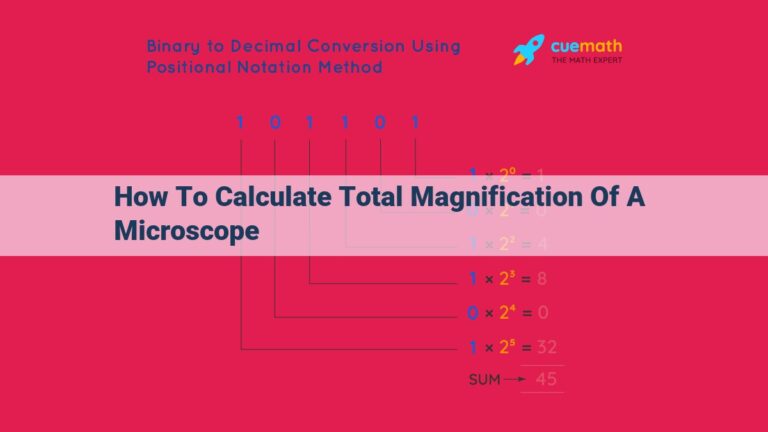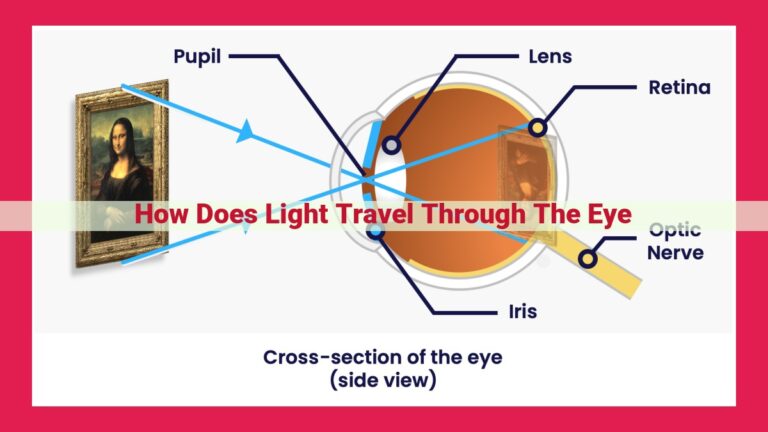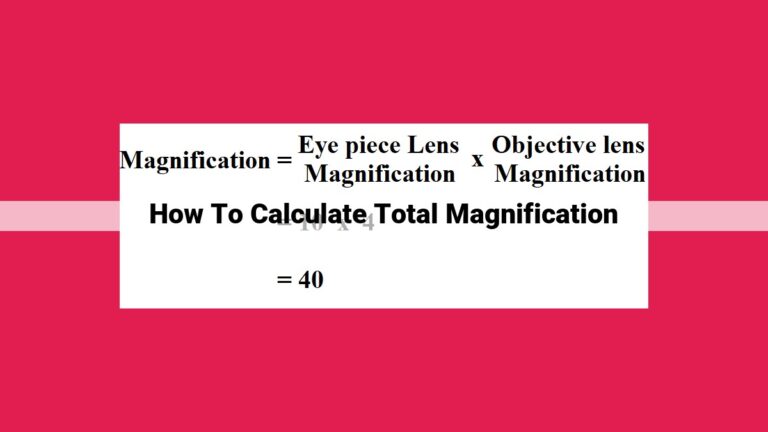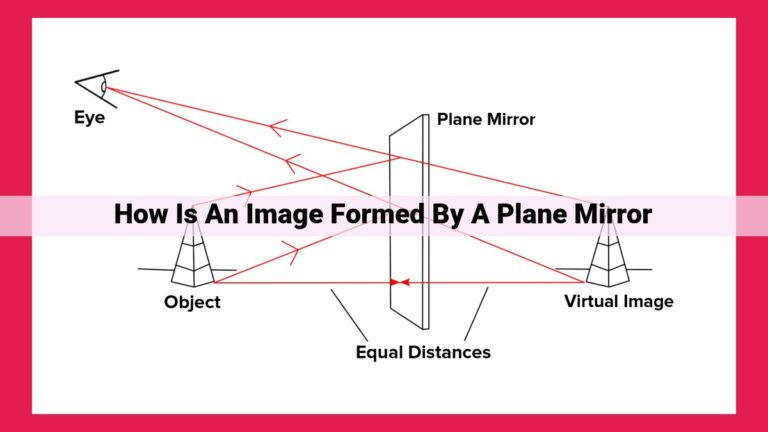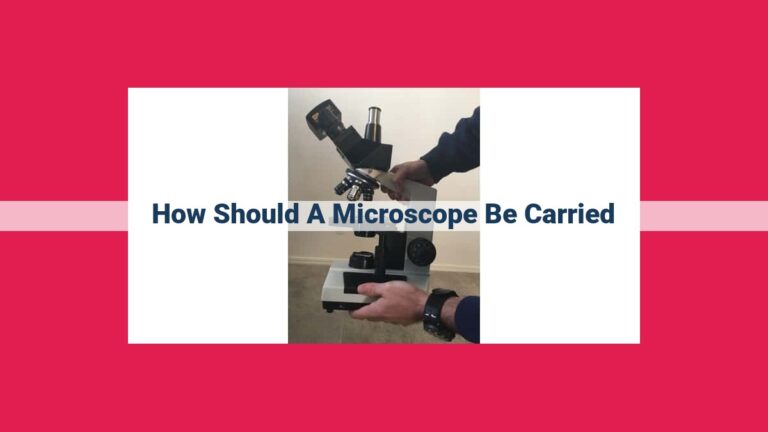Electron Microscope Costs: A Comprehensive Guide For Researchers
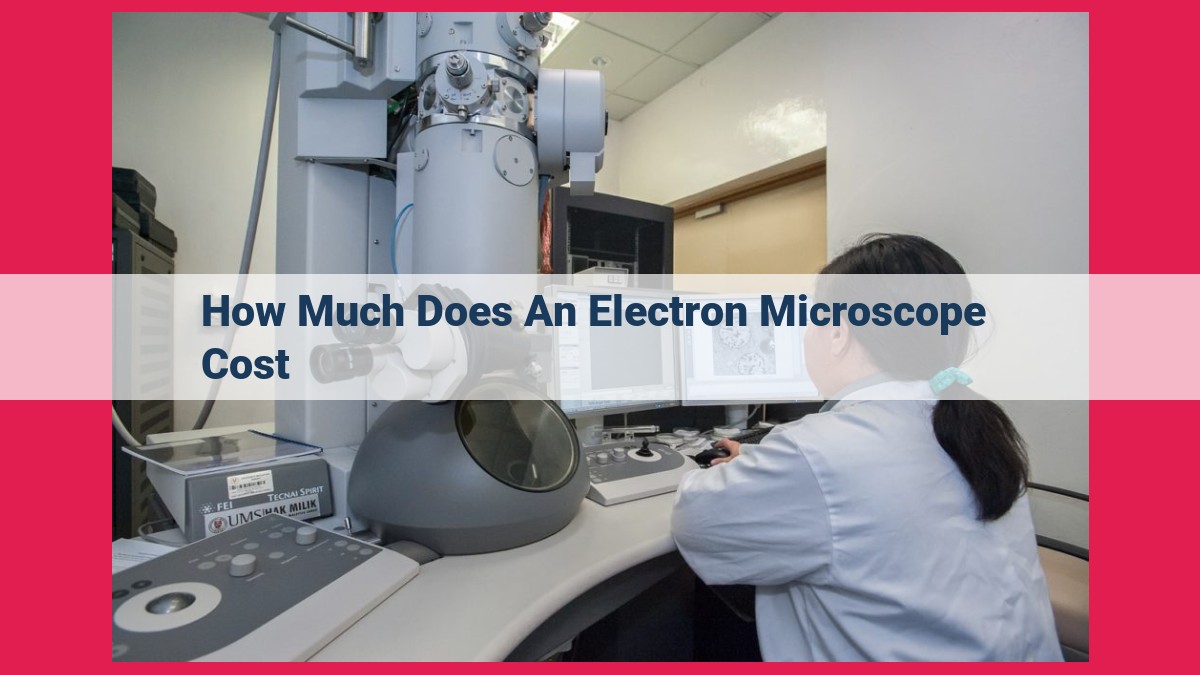
Electron microscope costs vary depending on type and features. Transmission electron microscopes (TEM), used for high-resolution imaging, typically cost between $100,000 to over $1 million. Scanning electron microscopes (SEM), useful for 3D surface imaging, range from $50,000 to $500,000. High-resolution TEMs and advanced SEM models, such as VP-SEM, FE-SEM, and FIB-SEM, can cost significantly more. Understanding these costs helps researchers make informed decisions when budgeting for microscope acquisition and research planning.
- Define electron microscopes and highlight their significance in various fields of science and technology.
- Emphasize the need for understanding the associated costs for budgeting and research planning.
The Unveiling of Electron Microscopes: A Journey of Exploration and Discovery
In the realm of scientific research and technological advancements, electron microscopes stand as indispensable tools, unlocking the secrets of matter at the atomic scale. These powerful instruments have revolutionized our understanding of everything from cells and viruses to materials and nanostructures. However, the question of cost is often a critical factor in planning and budgeting for electron microscopy research. This article aims to provide a comprehensive overview of the cost structure associated with different types of electron microscopes, helping readers make informed decisions and maximize their research potential.
Defining Electron Microscopes and Their Significance
Electron microscopes utilize a beam of accelerated electrons to create highly magnified images of specimens. Unlike optical microscopes, which use visible light, electron microscopes offer significantly higher resolution, allowing scientists to observe ultra-small structures and features that would otherwise remain hidden. This capability has made electron microscopes essential in fields such as biology, materials science, nanotechnology, and forensic science.
Understanding the Cost Structure
The cost of an electron microscope can vary significantly depending on its type, capabilities, and additional features. Generally, the cost includes the purchase price, maintenance, and operational expenses. The purchase price can range from tens of thousands of dollars for a basic scanning electron microscope (SEM) to millions of dollars for high-resolution transmission electron microscopes (HRTEM) and scanning transmission electron microscopes (STEM). Factors such as resolution, magnification, specimen preparation equipment, and software can also impact the cost.
Cost Analysis of Transmission Electron Microscopes (TEM)
TEMs provide high-resolution imaging of thin specimens. Different types of TEMs include TEM, STEM, and HRTEM, each offering varying levels of resolution and capabilities. The cost of a TEM can range from hundreds of thousands to over a million dollars, depending on its resolution, magnification, and additional features.
Cost Analysis of Scanning Electron Microscopes (SEM)
SEMs provide 3D imaging of sample surfaces. Different types of SEMs include SEM, VP-SEM, FE-SEM, and FIB-SEM, each designed for specific applications. The cost of a SEM can range from tens of thousands to hundreds of thousands of dollars, depending on its capabilities and features.
Cost Considerations for High-Resolution Electron Microscopes
HRTEM and STEM offer higher resolutions than TEM, enabling the study of materials at the atomic scale. HRTEM costs can vary depending on the desired resolution, magnification, and additional features. STEM costs are typically higher than TEM costs due to their combined imaging and analysis capabilities.
Cost Factors for Variable Pressure Scanning Electron Microscopes (VP-SEM)
VP-SEMs are designed to image non-conductive samples by using a variable pressure environment. The cost of a VP-SEM is typically higher than a basic SEM due to the additional equipment and features required for variable pressure imaging.
Cost Considerations for Field Emission Scanning Electron Microscopes (FE-SEM)
FE-SEMs utilize field emission sources for higher resolution and faster imaging. FE-SEMs tend to be more expensive than basic SEMs due to their enhanced capabilities.
Cost Analysis of Focused Ion Beam Scanning Electron Microscopes (FIB-SEM)
FIB-SEMs combine SEM with focused ion beam technology for sample preparation and 3D imaging. The cost of a FIB-SEM is typically higher than a basic SEM due to the additional ion beam source and capabilities.
Matching Needs with Financial Constraints
The cost of an electron microscope is a crucial factor to consider when planning research projects. By understanding the key factors that influence cost and matching specific research needs with available funding, researchers can make informed decisions and optimize their research potential.
Cost Structure of Transmission Electron Microscopes (TEMs)
Transmission Electron Microscopes (TEMs) are powerful tools that have revolutionized our understanding of the microscopic world. However, these instruments come with a significant price tag. In this section, we’ll delve into the cost structure of TEMs and the factors that influence their pricing.
Types of TEMs
There are various types of TEMs available, each tailored for specific research needs. Let’s take a look at the three main types:
-
TEM (Transmission Electron Microscope): This is the standard TEM, designed for high-resolution imaging of thin samples. It uses a beam of electrons to penetrate the sample, creating images with atomic-level detail.
-
STEM (Scanning Transmission Electron Microscope): STEM is an advanced TEM technique that provides atomic-scale imaging. It employs a finely focused electron beam that scans across the sample, generating high-resolution images and detailed chemical analysis.
-
HRTEM (High-Resolution Transmission Electron Microscope): HRTEM is a specialized TEM used for studying crystal structures at extremely high magnifications. It allows researchers to visualize individual atoms and their arrangements within crystals.
Factors Influencing Cost
The cost of a TEM is influenced by several factors, including:
-
Resolution: The higher the resolution, the more expensive the TEM. Resolution is measured in angstroms (Å), with higher numbers indicating better resolution.
-
Magnification: Magnification refers to the ability of the TEM to enlarge the image of the sample. Higher magnification requires more advanced optics, which increases the cost.
-
Features: Additional features, such as image processing software, specimen holders, and cooling systems, can also affect the price.
-
Manufacturer: Different manufacturers offer TEMs with varying price ranges, depending on their reputation and the quality of their instruments.
Typical Price Range
The cost of a TEM can range from $200,000 to over $1 million. Basic TEMs with lower resolution and fewer features are typically priced around $200,000-$400,000. Mid-range TEMs with higher resolution and more features can cost between $500,000-$800,000. High-end TEMs with the latest technology and cutting-edge capabilities can exceed $1 million in price.
Cost Analysis of Scanning Electron Microscopes (SEM)
The versatile SEM, with its exceptional 3D imaging capabilities, offers a range of specialized models tailored to meet specific research needs. Understanding the cost structure of these models is imperative for informed budgeting.
SEM Models and Capabilities
Basic SEM: This model provides fundamental 3D imaging of sample surfaces, suitable for a wide range of applications.
VP-SEM (Variable Pressure SEM): Designed to image non-conductive samples, VP-SEMs employ a low-vacuum environment that prevents charge buildup.
FE-SEM (Field Emission SEM): Equipped with a field emission gun, FE-SEMs offer enhanced resolution and faster imaging, ideal for high-detail investigations.
FIB-SEM (Focused Ion Beam SEM): Combining SEM with a focused ion beam, FIB-SEMs enable both sample preparation and 3D imaging, providing in-depth analysis.
Cost Comparison and Model Selection
The cost of SEM models varies depending on their capabilities and features. Basic SEMs typically start at a lower price point, while specialized models like FE-SEMs and FIB-SEMs require higher investments.
Choosing the appropriate SEM model involves balancing cost with research needs. For general 3D imaging, a basic SEM may suffice. However, for advanced applications or specific materials, specialized models like VP-SEM, FE-SEM, or FIB-SEM may be necessary to obtain optimal results.
Understanding the Costs of High-Resolution Transmission Electron Microscopes (HRTEM)
In the realm of scientific exploration, atomic-scale resolution is paramount for deciphering the intricate details of matter. HRTEM (High-Resolution Transmission Electron Microscopy) stands as the gatekeeper to this microscopic world, empowering researchers with unparalleled precision and clarity. But venturing into this realm comes with a price tag that requires careful consideration.
Several factors dance together to shape the cost of an HRTEM. Resolution, magnification, and additional features are the master puppeteers of this dance.
Resolution, the ability to distinguish between closely spaced objects, is the cornerstone of HRTEM’s power. Higher resolution means crisper images, enabling researchers to peer deeper into the atomic tapestry. However, this enhanced clarity comes at a premium.
Magnification works hand in hand with resolution, allowing researchers to zoom in on microscopic structures. The higher the magnification, the greater the level of detail visible. But like a camera’s zoom lens, increased magnification also demands a higher price.
Additional features, such as automated controls and image processing software, can further enhance the capabilities of an HRTEM. These bells and whistles, while not essential, can streamline the research process and yield even more profound insights. However, they add to the overall cost of the instrument.
Ultimately, the choice of an HRTEM depends on a delicate balancing act between the research objectives and financial constraints. Researchers must carefully weigh the desired level of resolution, magnification, and features against the available funds. Remember, the most expensive HRTEM is not always the best fit; the ideal instrument is the one that aligns seamlessly with the specific research goals, without breaking the budget.
Unveiling the Cost Dynamics of Scanning Transmission Electron Microscopes (STEM)
In the realm of electron microscopy, Scanning Transmission Electron Microscopes (STEMs) stand out as exceptional tools, seamlessly blending the capabilities of Transmission Electron Microscopes (TEMs) and Scanning Electron Microscopes (SEMs). Offering unrivaled atomic-scale resolution and in-depth elemental analysis, STEMs have become indispensable in various scientific disciplines.
While the power of STEM comes at a price, understanding its cost structure is crucial for researchers and institutions. The cost of a STEM can vary significantly depending on several factors, including:
Resolution and Magnification
STEMs are renowned for their exceptional resolution and magnification capabilities, enabling researchers to visualize and analyze materials at the atomic level. Higher resolution and magnification translate into more expensive instruments.
Additional Features
Modern STEMs come equipped with a range of advanced features that expand their functionality. These features may include energy dispersive X-ray spectroscopy (EDS), electron energy loss spectroscopy (EELS), and tomography capabilities. Each additional feature adds to the overall cost of the microscope.
Manufacturer and Model
Different manufacturers and models of STEMs vary in cost based on their reputation, reliability, and technological advancements. Well-established brands with a proven track record tend to command higher prices.
STEM vs. TEM vs. HRTEM: A Comparative Cost Analysis
STEMs offer advantages over other electron microscopy techniques, such as TEMs and HRTEMs. However, these advantages come with a cost premium.
TEM vs. STEM
While TEMs provide high-resolution imaging of thin samples, STEMs offer additional analytical capabilities and can handle thicker samples. For comparable resolution, STEMs typically cost more than TEMs.
STEM vs. HRTEM
HRTEMs are specifically designed for atomic-scale resolution, making them ideal for crystallography and materials science. HRTEMs are more expensive than STEMs, especially for higher resolution models.
Benefits of STEM for Imaging and Analysis
Despite their higher cost, STEMs offer several unique advantages that justify the investment:
Unmatched Resolution
STEMs provide atomic-scale resolution, allowing researchers to visualize and analyze materials at the atomic level. This level of detail is unachievable with other electron microscopy techniques.
Versatile Imaging Modes
STEMs can operate in various imaging modes, such as bright-field, dark-field, and high-angle annular dark-field (HAADF). This versatility enables researchers to extract different types of information from their samples.
Advanced Analytical Capabilities
STEMs can be equipped with a range of analytical tools, including EDS and EELS. These tools allow researchers to identify the elemental composition and chemical properties of their samples.
Cost Factors for Variable Pressure Scanning Electron Microscopes (VP-SEM)
When it comes to imaging non-conductive samples, Variable Pressure Scanning Electron Microscopes (VP-SEM) offer a valuable solution. These specialized SEM models allow researchers to examine specimens without the need for conductive coatings, which can alter their surface properties.
The cost of a VP-SEM typically ranges between $100,000 and $300,000, depending on factors such as magnification, resolution, and additional features. Compared to basic SEM models, VP-SEMs require more complex vacuum systems and specialized detectors, contributing to their higher price point. However, the advantages they offer make them a worthwhile investment for researchers working with non-conductive materials.
VP-SEMs excel in applications such as geological sample analysis, biological imaging, and polymer research. In geology, they provide valuable insights into the microstructure of rocks and minerals, while in biology, they enable the examination of delicate biological specimens without damaging them. In polymer research, VP-SEMs help researchers understand the morphology and properties of polymers, which is crucial for developing advanced materials.
Overall, the cost of a VP-SEM should be considered in relation to the specific research objectives and the potential benefits it can offer. For researchers working with non-conductive samples, a VP-SEM can provide invaluable data and justify the investment.
Cost Considerations for Field Emission Scanning Electron Microscopes (FE-SEM)
Stepping into the realm of microscopy, the Field Emission Scanning Electron Microscope (FE-SEM) stands out as a sophisticated tool offering unparalleled imaging capabilities. FE-SEMs employ a finely focused beam of electrons to scan the surface of a sample, producing high-resolution images with exceptional depth and clarity.
Compared to conventional Scanning Electron Microscopes (SEMs), FE-SEMs boast significant advantages. Their superior resolution allows for the visualization of intricate details and nanostructures, while their faster imaging speeds facilitate the efficient analysis of larger samples. These enhanced features, however, come at a higher cost compared to basic SEM models.
The price of an FE-SEM can vary considerably depending on the specific configuration and capabilities required. Factors such as the desired resolution, magnification range, and additional features like energy-dispersive X-ray spectroscopy (EDS) can significantly impact the overall cost.
FE-SEMs excel in applications where high resolution and precision are paramount. They are widely used in materials science, nanotechnology, and biological research to investigate the morphology, composition, and properties of materials at the nanoscale. Their ability to provide detailed images of surface topography and internal structures makes them indispensable for understanding the behavior of materials and biological systems.
In conclusion, while FE-SEMs offer exceptional imaging capabilities, their higher cost should be carefully considered against the specific research needs and available funding. For applications requiring the highest levels of resolution and detail, FE-SEMs may be the ideal choice, while lower-cost SEM models may suffice for less demanding tasks.
Cost Analysis of Focused Ion Beam Scanning Electron Microscopes (FIB-SEM)
- Describe the unique capabilities of FIB-SEM for sample preparation and 3D imaging.
- Compare the costs of FIB-SEM with basic SEM models.
- Discuss the applications where FIB-SEM provides valuable insights.
Unveiling the Intriguing World of Electron Microscopes: A Detailed Cost Analysis
The realm of scientific and technological advancement is deeply entwined with the remarkable capabilities of electron microscopes. These indispensable tools unlock previously hidden realms of microscopic detail, enabling researchers to delve into the intricate structures and properties of materials. Understanding the costs associated with these advanced instruments is crucial for budgeting and effective research planning. Let’s embark on a journey to explore the cost landscape of electron microscopes, empowering you to make informed decisions.
Transmission Electron Microscopes (TEM)
TEMs offer unparalleled high-resolution imaging of thin samples. Specialized variants include STEM for atomic-scale imaging and HRTEM for studying crystal structures with exceptional magnification. The cost of TEMs varies depending on factors like the chosen model, resolution, and additional features.
Scanning Electron Microscopes (SEM)
SEMs excel at providing 3D visualization of sample surfaces. Various models are available, including VP-SEM for non-conductive samples, FE-SEM for enhanced resolution, and FIB-SEM for sample preparation and 3D imaging. Each model comes with its own price range, offering a balance of capabilities and costs.
High-Resolution Transmission Electron Microscopes (HRTEM)
HRTEM empowers researchers with atomic-scale resolution for in-depth structural analysis. Its cost is influenced by factors like resolution, magnification, and additional functionalities.
Scanning Transmission Electron Microscopes (STEM)
STEM combines the imaging capabilities of TEM and SEM, offering a unique perspective on materials. Its cost falls within the range of TEM, STEM, and HRTEM options, providing flexibility for researchers.
Variable Pressure Scanning Electron Microscopes (VP-SEM)
VP-SEMs excel in imaging non-conductive samples, a feat not easily achieved with conventional SEMs. Its cost is comparable to basic SEM models, making it an attractive option for specific applications.
Field Emission Scanning Electron Microscopes (FE-SEM)
FE-SEMs boast superior resolution and faster imaging capabilities compared to basic SEMs. Their higher cost is justified by the enhanced performance and expanded research possibilities.
Focused Ion Beam Scanning Electron Microscopes (FIB-SEM)
FIB-SEMs combine SEM with focused ion beam technology for sample preparation and 3D imaging. Its cost is typically higher than basic SEM models but offers unparalleled insights for specialized applications.
Scanning Probe Microscopes (SPM)
SPM techniques like Atomic Force Microscopy (AFM) analyze surface topography and material properties. SPMs come with a range of costs, providing options for researchers with varying budgets.
Matching Needs with Financial Constraints
Understanding the cost factors associated with electron microscopes empowers researchers to align their specific research needs with available funding. Careful consideration of capabilities, resolution requirements, and available budget ensures that the most suitable instrument is chosen for each project. By navigating the cost landscape, researchers can maximize the impact of their research while optimizing their financial resources.
Exploring the Cost Structure of Scanning Probe Microscopes (SPMs): A Comprehensive Guide
In the realm of scientific research and industrial applications, the ability to probe and analyze materials at the nanoscale is crucial. Scanning Probe Microscopy (SPM) has emerged as a powerful tool for examining surface topography and characterizing material properties at unprecedented levels of detail. However, the cost of SPM instruments can vary significantly, making it essential to understand the factors that influence their pricing.
Types of SPM Techniques
SPM encompasses a range of techniques, with Atomic Force Microscopy (AFM) being the most widely used. AFM utilizes a sharp tip to scan the surface of a sample, allowing for the precise measurement of surface topography, roughness, and other nanoscale features. Other SPM techniques include:
- Scanning Tunneling Microscopy (STM): Maps the electronic structure of surfaces.
- Magnetic Force Microscopy (MFM): Detects magnetic fields near surfaces.
- Electrochemical Scanning Microscopy (ECSM): Examines electrochemical processes at surfaces.
Cost Considerations for SPM Instruments
The cost of SPM instruments varies depending on factors such as:
- Type of SPM technique: The choice of SPM technique significantly impacts the cost, with AFM generally being more affordable than STM or other specialized techniques.
- Resolution and imaging capabilities: Higher resolution and more advanced imaging modes, such as contact mode and tapping mode, typically increase the price.
- Sample stage and environmental control: The size of the sample stage and the ability to control temperature, humidity, or other environmental factors affect the cost.
- Additional features and accessories: Options such as software analysis packages, external controllers, or specialized probes can add to the final price.
Advantages of SPM
Despite their cost, SPM instruments offer numerous advantages for research and industry:
- Nanoscale imaging: SPM techniques provide high-resolution images of surfaces, revealing features at the atomic or molecular level.
- Surface topography analysis: SPM allows for accurate measurements of surface roughness, thickness, and other topographical parameters.
- Material characterization: SPM can probe material properties such as elasticity, hardness, and electrical conductivity at the nanoscale.
- Non-destructive analysis: SPM techniques are non-destructive, enabling the examination of samples without damaging them.
Matching Needs with Financial Constraints
When selecting an SPM instrument, it is crucial to consider the specific research or industrial needs and the available funding. Balancing cost with desired capabilities is essential. For researchers with limited budgets, basic AFM systems may suffice for certain applications. However, more advanced techniques and specialized instruments may be necessary for more demanding experiments.
Understanding the cost structure of SPM instruments is vital for making informed decisions when purchasing or using these powerful research tools. By carefully evaluating the type of SPM technique, resolution requirements, and additional features needed, researchers can optimize their budget and select the SPM system that best meets their scientific or industrial objectives.
